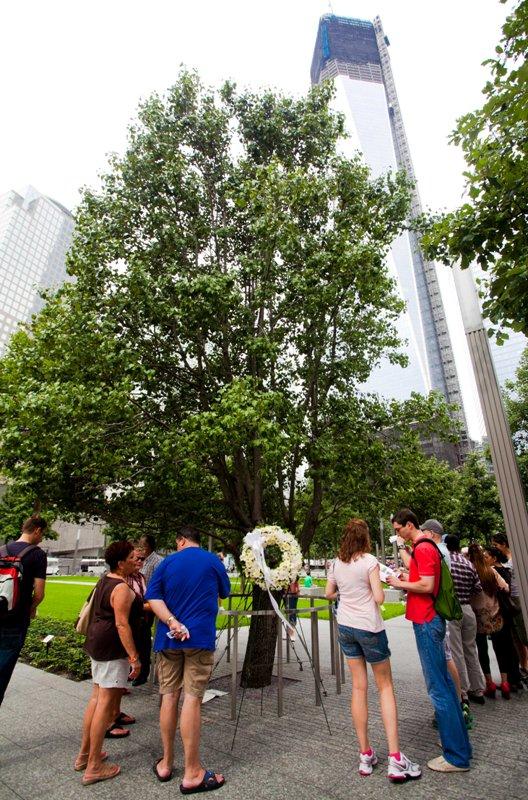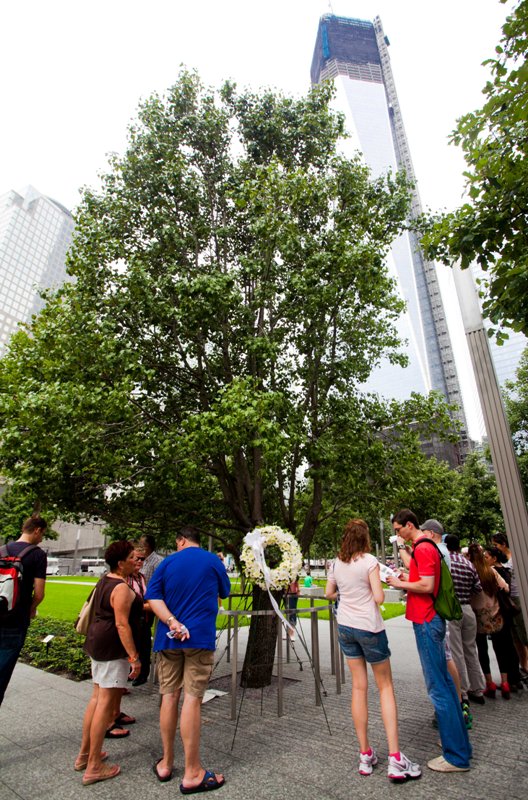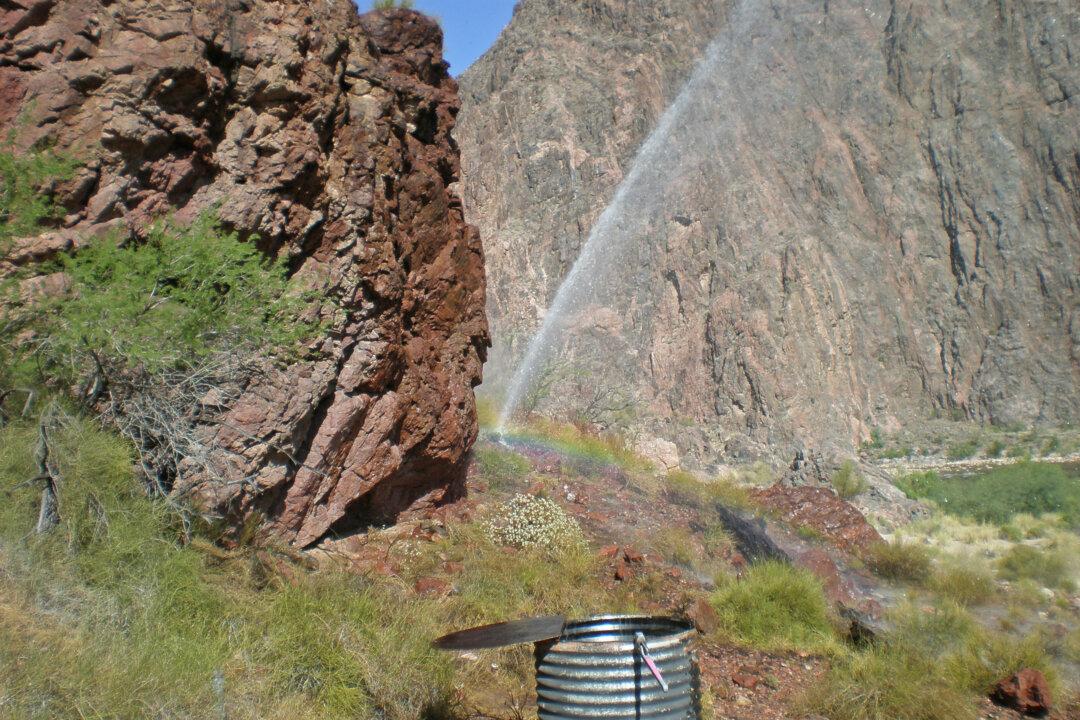NEW YORK—A lone Callery pear tree stands among the 400 oak trees at the 9/11 Memorial in lower Manhattan.
The trunk is dark and scratched. Knots and jagged wood dot the middle of the tree, scars from branches snapped off long ago. As the eye wanders up the tree, the bark gets lighter and smoother; lush, green leaves pop out of the branches.
“This tree actually has a timeline etched into its bark,” said Ron Vega, director of design and construction for the 9/11 Memorial. Vega pointed out the pre- and post-9/11 growth on the tree. “She is her own time capsule,” he said.
The tree, aptly named the Survivor Tree, stands roughly near where it was planted in the 1970’s where it greeted guests in the plaza of the World Trade Center for decades. After the attacks on Sept. 11, 2001, the tree was buried for weeks under the rubble of the Twin Towers, the buildings that once surrounded it.
In October of 2001, the tree was dug out of the rubble; the last living thing pulled from ground zero.
“She represents so much more than just the resilience of the city. She represents the resilience of that event,” said Vega. “She represents the ability to come back after so much trauma.”
Vega has been working with the 9/11 Memorial since 2007, playing an integral role at getting the Survivor Tree back home.
Tree Hunting
After reviewing documents that just called for a paver stone to be engraved with the words “survivor tree” on it, Vega set out to find the tree he had remembered seeing on the news just weeks after the attack.
It took him six weeks and much running around, but he found it at the Arthur Ross Nursery in the Bronx. “I went to visit the tree and I just fell in love with her,” Vega said. “Having been a member of the recovery team for 10 months—night shift—and having had to bring things that did not survive out of that recovery effort, having the last living thing that came out of the WTC disaster under my wing, there is no way I could not be in love with this tree.”
The Survivor Tree was still in rough shape. It had been placed in a corner against an 18–foot-high fence and the trees next to it were blocking the sunlight, making it grow asymmetrically. Vega was unsure if a transport to the 9/11 Memorial site would be possible. It was, but it was a 3-year process.
In March of 2008, Vega went to the nursery to visit the tree and found it was in full blossom. Vega told himself, “I’m bringing this tree back home.”
Two years later, in March, 2010, a brutal Nor'easter ripped through New York City and wiped out approximately 100,000 trees. In the Bronx, the Survivor Tree had been knocked down, but once again, it refused to be taken out. In fact, it had some unlikely help in staying alive.
“The fence (which I complained about blocking the sun), is what kept the tree from getting totally destroyed because it leaned against it.” Vega said. He said the trees that blocked the sun did not survive the storm.
They were unsure if the tree could survive, as half of its root system had been snapped. But, a month later, the Survivor Tree blossomed once again. “We were all so encouraged. We knew she was going to survive.”
In December of 2010, the tree was moved back to its home on the plaza of the 9/11 Memorial where it stands tall today, having also survived Hurricane Irene in August of 2011.
The Next Generation
Callery pear trees typically live about 20 years and the Survivor Tree is already over 50. Vega knows the Survivor Tree is a tough tree, but like all living things, it can’t live forever.
In hopes of keeping the Survivor Tree alive for the next generation to visit, Vega has been propagating the fruit into seedlings, which have now grown into hundreds of saplings. “The first children of this wonderful tree are now born and having a really good time in Connecticut,” Vega said.
While no plans are in the works, Vega hopes to see those trees in Central Park or even at the flight 93 Memorial in Pennsylvania.
For Vega, the Survivor Tree is more than just a tree. “I can touch the past when I touch this tree. I can feel like I can go back in time to a happier time to a time without fear and that is what this tree gives me,” Vega said.
For visitors, the tree provides a sense of hope. “I stand on the plaza and watch people just go up and hug it. It is amazing,” Vega said. “I think it has to do with an innate thing we all have as humans that we appreciate things that survive that make no sense why they survive.”
The Epoch Times publishes in 35 countries and in 19 languages. Subscribe to our e-newsletter.







